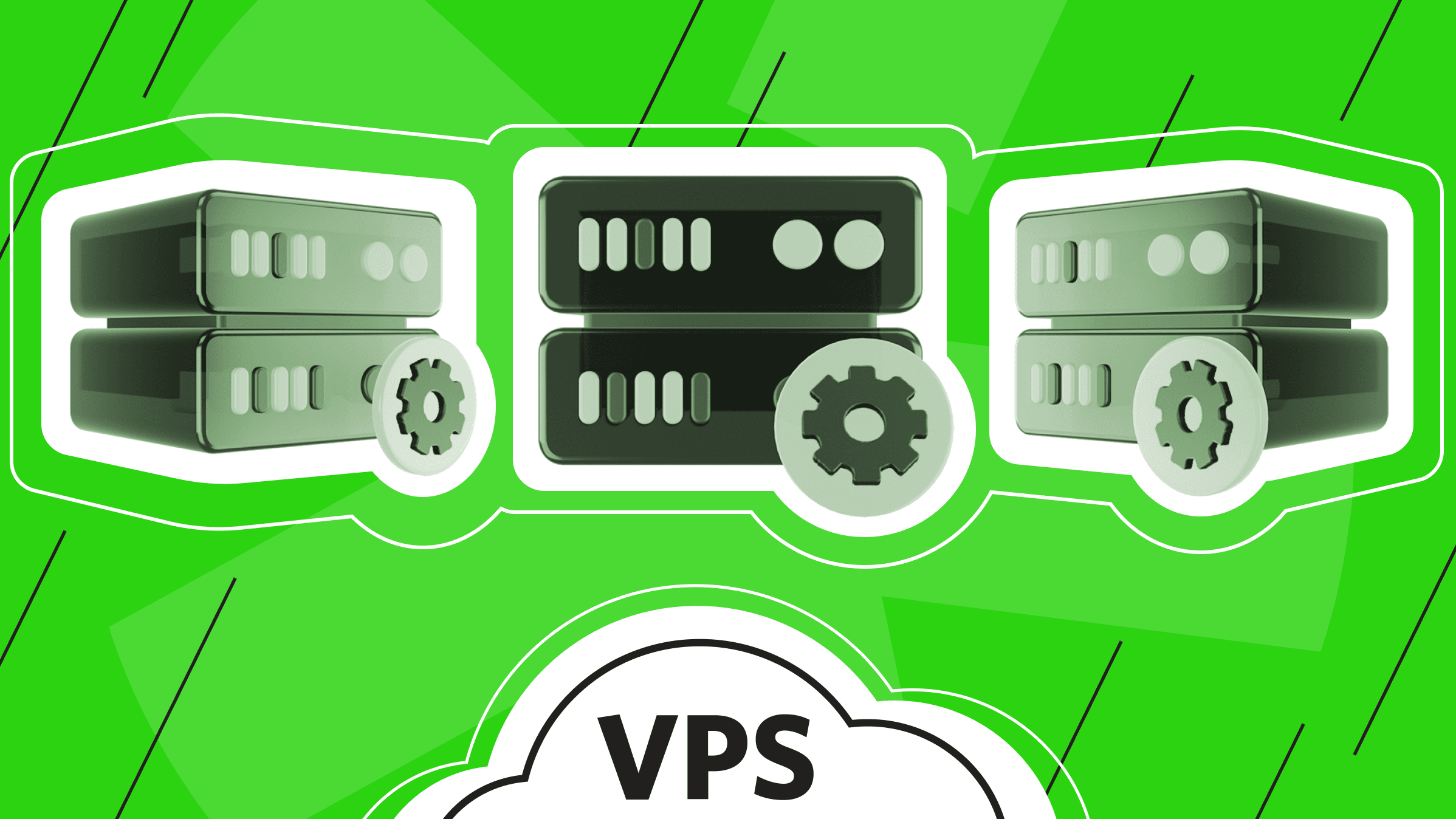
Are you tired of your VPS server's poor performance? Are you still waiting forever to open a website or suffering from a high ping rate when playing online?
In this article, we will share 5 effective strategies for optimizing the performance of your virtual private server to ensure a fast and smooth browsing experience.
The Importance of VPS Performance
40% of users leave a website in just 3 seconds, so site owners need to ensure that their site functions like a high-speed rocket, and gamers need to ensure their game is running without lag. That’s where VPS hosting comes in, providing the necessary speed and security to retain visitors. However, even robust VPS setups can experience performance degradation.
Only by optimizing VPS performance can you improve your server's speed, efficiency, and, thereby, reliability.
VPS Performance Optimization Overview
By optimizing VPS performance, you can:
- Minimize the likelihood of possible errors and failures.
- Reduce ping and make your website work faster.
- Improve the VPS efficiency and speed.
- Reduce memory usage and processing requirements.
- Improve the overall health of the server by reducing the load.
The importance of optimizing VPS performance becomes more evident when considering server performance from a conversion perspective. Research shows that for every additional second a page loads, your conversion rate decreases by an average of 0.3%. Even this tiny fraction of a percentage loss in productivity can impact your company's bottom line. Therefore, optimizing your VPS is crucial to increase conversions and ensure maximum website speed.
5 Basic Strategies for Optimizing VPS Performance

As we mentioned earlier, even reliable and well-optimized VPSs can experience performance degradation. Several factors can affect a VPS server's performance, and accordingly, there are several strategies for optimizing VPS performance.
In the following subsections, we will discuss factors in, and solutions for, improving the performance of your VPS server, including the 5 main strategies for optimizing VPS performance.
Resource Allocation
The CPU (Central Processing Unit) allocation, the number of CPU cores and clock speed allocated to your VPS, the size of RAM (Random Access Memory), and disk space – all of these resources, and their proper allocation, can significantly impact the performance of the processor and the server as a whole. If your VPS server has fewer applications or processes running simultaneously, it can cause poor performance. Overlooking resource allocation can result in poor performance or wasted resources.
Optimizing VPS Resource Usage Solution
Monitoring resource usage will help you find programs or processes that are using too much CPU, RAM, or disk space. Higher processing power allows you to better cope with computing tasks and improve responsiveness. You can use htop and iostat to track resource usage. You can also reduce the number of MySQL connections or Apache worker processes to free up CPU and RAM. Increasing and optimizing memory can improve performance. Therefore, choosing a VPS plan that quickly scales resources as your needs grow is essential.
Get the most out of your budget with our affordable, efficient VPS solutions. Fast NVMe, 30+ countries, managed and unmanaged VPS.
OS Configuration and Database Performance Optimization
Operating system (OS) selection and database settings can affect performance. Some OS are optimized to improve performance with certain types of applications, and incorrect settings can lead to ineffectiveness.
OS Configuration and Database Performance Optimization Solution
Operating system optimization and adequately configured software can improve performance. Optimizing database performance is also essential for satisfactory VPS server performance if your website or application uses a database. To improve database performance, you can do the following:
- Index tables to improve query performance.
- Use stored procedures to reduce the number of queries sent to the database.
- Optimize queries to minimize the data returned by the database.
Network Traffic
Sufficient bandwidth ensures smooth data transfer and reduces the risk of bottlenecks. A large amount of traffic on your VPS server can slow down page loading and reduce network speed.
Network Traffic Solution
Reduced ping results in faster response times, critical for real-time applications and services. Configuring your web server to handle many simultaneous connections can improve performance. To optimize your web server, you can do several things, such as:
- Enable compression to reduce client file size.
- Enable caching (pages, objects, code) to reduce the number of requests sent to the server.
- Use a content delivery network (CDN) to deliver static files.
- You can also use a load balancer to distribute traffic evenly across multiple servers and prioritize applications.
Software Updates and Security Measures
Un-updated VPS software leaves you vulnerable to cyber-attacks, and firewall and security tools can protect against attacks and introduce some overhead and reduced performance.
Software Updates and Security Measures Solution
You must ensure that your VPS software, including the core and all applications, is current. Regular system and software updates ensure both optimal performance and security. Although most operating systems handle updates automatically, we recommend checking all components manually to ensure they are still up-to-date. This can be done by going to the server settings or control panel, like ispmanager or HestiaCP. To perform updates for Linux OS users, you can use a package manager such as apt, yum, etc., and follow these steps:
- Login to your Linux VPS as root via SSH and run the appropriate commands.
- yum update for CentOS/RedHat
- apt-get update for Debian/Ubuntu.
Environmental Factors
The physical location of the data center can affect network latency and performance. The physical distance between devices on a network can also affect network performance, especially in the case of wireless networks, where signal strength and interference can affect connection and data transfer speeds.
Environmental Factors Solution
Modern data centers are designed to create and host high-performance IT infrastructure and local physical servers that support applications and workloads across physical infrastructure pools and in multi-tenant environments. High-quality data center infrastructure, such as redundant power and cooling systems, ensures higher performance.
By understanding and optimizing these factors and implementing improvement techniques, you can significantly improve the performance of your VPS server.
Tools for Monitoring and Optimizing VPS Performance

How can you check VPS performance? VPS performance can be monitored using monitoring tools that allow you to monitor and troubleshoot potential performance issues. Free tools like Nagios or Zabbix help monitor your VPS resource usage, uptime, and performance. In addition, these tools can alert and notify you when certain thresholds are exceeded.
There are also tools that you can use to optimize the performance of your VPS server. Here are some of them:
- New Relic is a monitoring tool that shows application performance.
- Cloudflare's CDN can reduce server load and speed up page load times.
- The Memcached caching system can improve PHP performance.
Conclusion
In conclusion, optimizing VPS performance involves a combination of proper configuration, regular maintenance, and effective resource management. Summarizing the VPS optimization strategy, it goes without saying that several best practices need to be followed:
- Constantly monitor resource usage.
- Optimize the correct web server and database settings.
- Update server software and applications regularly.
- Implement strict security measures.
- Disable root logins and use strong, unique passwords or SSH keys.
- Choose a web server that suits your needs.
- Implement caching and compression mechanisms to reduce server load.
- Prioritize applications.
- Use a CDN, reducing latency and improving load times for users.
- Develop and maintain a backup and disaster recovery plan.
- Use tools like Ansible, Puppet, or Chef to automate configuration management and deployment.
- Use a load balancer to distribute traffic evenly.
- Perform load testing regularly to ensure your server can handle the expected traffic.
You can order our VPS server or rent dedicated server if you are not using a VPS yet. Following the listed strategies and recommendations, you can optimize your VPS's performance and avoid common mistake.
Dedicated Server
Smooth operation, high performance, and user-friendly setup - it's all there for you.
From $70.00/mo

